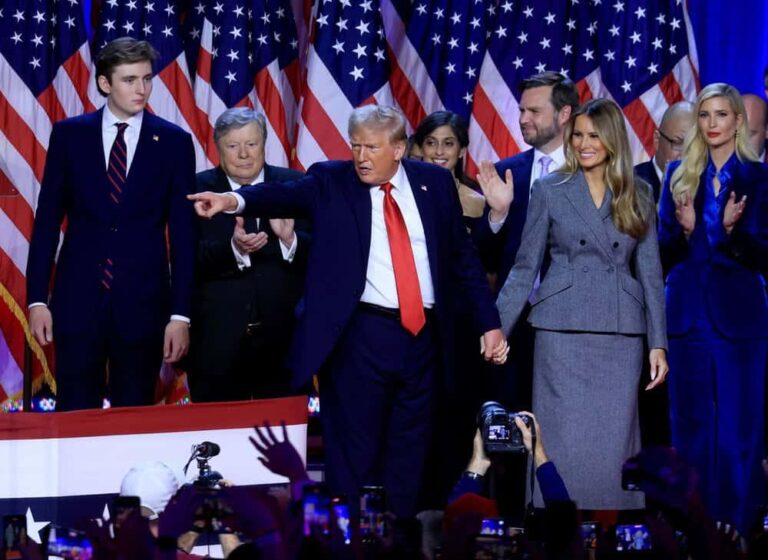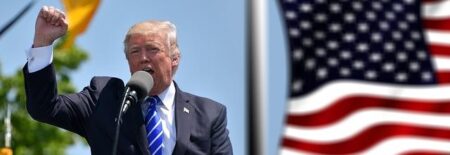As the prospect of a second term for US President Donald Trump looms on the horizon, the World Economic Forum has turned its analytical lens to the potential global and domestic implications of continued Trump leadership. This article explores the economic, political, and geopolitical outlook shaped by the presidentŌĆÖs policies and the ForumŌĆÖs expertsŌĆÖ assessments, providing insight into how a renewed Trump administration might steer the United States and the world through an increasingly complex international landscape.
The Impact of US Foreign Policy Shifts on Global Trade Dynamics
The recalibration of US foreign policy under President Trump’s administration has significantly altered the landscape of global trade. Emphasizing protectionism and unilateral trade agreements, the administration’s approach has led to increased tariffs, renegotiation of long-standing trade pacts, and a shift toward bilateral arrangements rather than multilateral accords. These changes have introduced volatility into supply chains and created uncertainty among international investors, prompting many economies to reconsider their reliance on traditional trade partnerships with the US.
Key global markets have responded by exploring new alliances and trade frameworks to hedge against unpredictability. The table below highlights the primary shifts in trade partnership priorities observed since the policy transitions began:
| Region | Pre-2017 Major Trade Partner | Post-2017 Shift | Trade Strategy |
|---|---|---|---|
| Asia-Pacific | United States | China & ASEAN | Strengthening regional blocs |
| Europe | United States | European Union internal trade boosts | Deepening Economic Union |
| Latin America | United States | China & Mercosur | Diversification of export markets |
The evolving stance from Washington has highlighted the need for adaptive economic strategies globally, emphasizing resiliency and diversification in trade relations. Countries are prioritizing collaborations that reduce exposure to geopolitical risks tied to shifting US policies, potentially foreshadowing a more fragmented but dynamic world trade environment.
Economic Growth and Innovation Trends Under a Potential Second Term
Should President Trump embark on a second term, economic growth could be driven by a mix of policy continuity and strategic shifts favoring innovation. The administrationŌĆÖs pro-business stance, including tax incentives and deregulation, is likely to persist, potentially stimulating capital investment and job creation. However, challenges such as inflationary pressures and global supply chain disruptions might temper growth rates. The technology sector, particularly areas like artificial intelligence, renewable energy, and advanced manufacturing, stands to benefit from targeted federal funding and a renewed focus on competitive national priorities.
Innovation trends will likely be shaped by a balance between encouraging domestic R&D and recalibrating trade policies. Key anticipated initiatives may include:
- Expanded subsidies for emerging technologies.
- Strengthening intellectual property protections.
- Investment in workforce reskilling programs.
| Sector | Expected Growth | Innovation Focus |
|---|---|---|
| Technology | 6-8% annually | AI, Quantum Computing |
| Energy | 4-5% annually | Renewables, Battery Storage |
| Manufacturing | 3-4% annually | Automation, Smart Factories |
Addressing Climate Change Challenges with Strategic Policy Initiatives
Strategic policy initiatives aimed at combating climate change are set to dominate discussions in President Trump’s anticipated second term. The administration is expected to emphasize a multifaceted approach, balancing economic growth with environmental stewardship. This includes fostering innovation in clean energy technologies and incentivizing private sector investment, while cautiously navigating regulatory adjustments that prioritize American industries’ competitiveness on the global stage.
Key components likely to shape policy actions include:
- Expansion of renewable energy projects through public-private partnerships.
- Investment in carbon capture and storage technologies to mitigate industrial emissions.
- Revision of environmental regulations to balance ecological goals with economic feasibility.
- Commitment to international climate agreements that align with US economic interests.
| Policy Area | Projected Investment | Expected Impact |
|---|---|---|
| Renewable Energy | $50 Billion | +25% Clean Energy Output |
| Carbon Capture | $15 Billion | Reduce Emissions by 10% |
| Regulatory Reforms | ŌĆö | Enhanced Industrial Competitiveness |
Strengthening Public-Private Partnerships to Boost Infrastructure and Job Creation
Public-private partnerships (PPPs) have emerged as a strategic avenue to accelerate the United StatesŌĆÖ infrastructure modernization while fostering substantial job creation across multiple sectors. By leveraging private sector capital and expertise alongside government resources, these partnerships aim to bridge funding gaps and expedite project delivery. Key areas of focus include transportation networks, renewable energy projects, and digital infrastructure, each promising ripple effects in job markets and technological innovation.
Experts highlight several benefits that make PPPs a cornerstone of the administrationŌĆÖs infrastructure agenda:
- Enhanced Efficiency: Private entities streamline project management and reduce costs through performance-based contracts.
- Risk Mitigation: Sharing financial and operational risks between public and private sectors safeguards taxpayer investments.
- Innovation Boost: Private companies bring cutting-edge technologies and creative financing models to public works.
| Sector | Expected Investment ($B) | Job Creation Potential (Thousands) |
|---|---|---|
| Transportation | 120 | 450 |
| Renewable Energy | 80 | 320 |
| Digital Infrastructure | 50 | 150 |
While the PPP model gains traction, ongoing debates focus on ensuring equitable access and transparency. Effective regulatory frameworks and rigorous oversight will be essential to maximize public benefit and maintain stakeholder confidence. If executed adeptly, these partnerships could usher in a new era of robust economic growth and infrastructure resilience in the coming years.
Final Thoughts
As the prospect of a second term for President Trump continues to draw both domestic and international attention, the World Economic Forum underscores the complex challenges and opportunities that lie ahead. From trade policies to global alliances, the administration’s next chapter will undoubtedly shape economic and geopolitical landscapes in profound ways. Stakeholders worldwide remain watchful, as the evolving dynamics will have far-reaching implications well beyond the United States.




